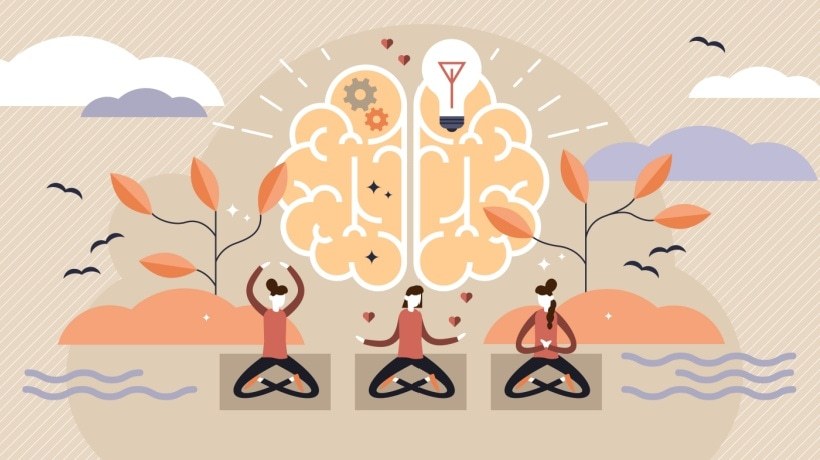Self-Regulation In Online Learning
There are many reasons to participate in an online course or program. When designed and taught well, online learning offers opportunities for quality learning. Once the system is in place, online learning is cost-effective, adding students at low-to-no marginal cost. Online learning is convenient, offering learners the opportunity to burnish their knowledge and skills any time, any place, and at any pace.
Tuning In And Dropping Out
Attrition—or dropping out and failing to complete a course of study or class—takes a sledgehammer to each of these justifications for online learning. Though exact figures are unknown, attrition rates in online learning can be twice as high as traditional face-to-face learning formats (Levy, 2007). Indeed, some research suggests that attrition rates in online courses hover around 40-60% (Burns, 2013). In Massively Open Online Courses (MOOCs), which are typically self-paced, attrition rates can (and often do) exceed 90% (Burns, 2016). This high rate of attrition undermines the quality, effectiveness, validity, and cost-effectiveness of online education. Indeed, it “undermines the very rationale for online learning and calls into question whether it is even worth the investment” (Burns, 2011, p. 195).
Research on online learning often focuses on the many reasons and motivations that drive attrition (time, life factors, and the nature of online learning). But why in fact do many online learners—albeit a minority—persist even when confronted with internal and external challenges that may arise within a particular course or context? A major reason is “self-regulation.”
What Is Self-Regulation?
Broadly, self-regulation is the ability to organize one’s emotions and behavior and thoughts in pursuit of attaining a long-term goal. It includes self-control (see images 1, 2 and 4 which reference the famous, and somewhat controversial, marshmallow test) and self-efficacy (a belief that the learner can succeed if he/she tries). Self-regulation typically involves three “phases": forethought, a focus on performance, and reflection.

Figure 1: I love marshmallows and I REALLY want to eat these...
How Do We “Self-Regulate”?
Self-regulated learners use metacognitive, motivational, and behavioral processes to achieve a specific learning and performance goal (Zimmerman, 2011). These 3 processes are highly integrated:
- Metacognitive processes
These processes involve the learner consciously thinking about and evaluating the effectiveness of the cognitive strategies they use to complete a learning task, monitoring these processes and their progress, and then self-evaluating and adjusting strategies if and when necessary (Zimmerman, 2011; McCormick, 2003, cited in Wandler & Imbriale, 2017). - Motivational processes
These processes enable the online learner to “initiate and sustain focused goal-directed activities while ignoring distractions or setbacks” (Wandler & Imbriale, 2017, Zimmerman, 2011). This involves goal-setting and using strategies to attain this goal. - Behavioral processes
Self-regulatory behavioral processes include “positive” behaviors that are typically associated with successful or desired task completion (Zimmerman, 2011). Such behaviors may include seeking additional tutoring, making a schedule to better manage time, modifying one's environment to avoid distractions and temptations (like marshmallows), keeping a study log, and above all “help-seeking”—reaching out to the instructor or other online learners for support.
Essentially, online learners who “self-regulate” successfully use these 3 processes as part of forethought, performance, and self-reflection (Zimmerman, 2011).
From Goals To Attainment: Self-Regulation In Online Learning

Figure 2: I've modified my environment so I can stay focused on my goal
Obviously, an online course or program cannot change the innate characteristics of an online learner, but it can, through a combination of careful attention to design, instruction, and preparation of learners, help to accomplish two self-regulation-related tasks. First, purposeful design and delivery of a course can furnish supports to help learners with little self-regulation get through the course. Second, instructors can help learners develop their own “self-regulated learning strategies” (Barnard-Brak et al., 2010). The remainder of this article proposes 3 sets of strategies to help accomplish these two tasks.
Strategy 1: Design Cohort-Based Courses
While it’s easier—logistically and financially—to create asynchronous, self-paced courses for our learners, attrition is much higher in these kinds of courses. The learners are working on their own; no one may know or care if they drop out, and the learner is alone in the pursuit of his/her learning endeavors.
Thus, to reduce attrition, we should design instructor-led, cohort-based, and synchronous courses that offer multiple opportunities for meaningful and constant learner interaction with content, with the instructor, and with one another. In particular, it’s important to create high interaction courses with a heavy emphasis on learner-instructor and learner-learner interaction. Why? It’s pretty intuitive. Meaning-making is easier done within a community. There's less temptation to give up and it's emotionally and cognitively powerful to wrestle with difficult concepts, interpret information, and to do so communally. Further, because so many people are depending on you, and you are part of a group, there is less temptation to give up. Research shows that such courses are closely associated with the completion of, satisfaction with, improved achievement in, and stronger learning outcomes in an online course.
Integrate Other Structured Elements
In addition to creating community-based, instructor-led, high-interaction courses, there are numerous other design considerations that can help to promote self-regulation. For example, online courses should:
- Include clear, easy-to-find instructions for assignments, well-defined organization, and easy navigation.
- Offer an orientation that addresses self-regulation—what it is, why it is important, and strategies to attain it—that has learners assess their own self-regulation skills and provide scaffolds and strategies for self-regulation (such as having the learners design a study plan, etc.).
- Design multiple short-term goals that align with activities that are briefer and that have tighter timelines.
- Use checklists and estimates of how long activities will take to complete. Many LMSs have this function, though not all do. Figure 3 is an example of a manually created checklist.

Figure 3: Example of a checklist to keep learners on task
- Use exemplars and anchors rubrics for learner reference. Exemplars and anchors (for example, of “excellent” discussion prompts) provide scaffolds and models of desired performance. Analytic rubrics, with clear criteria and detailed performance levels, can be terrific tools to promote self-regulation, in particular both the metacognitive and behavioral processes associated with self-regulation. Such rubrics provide clear guidelines of what optimal performance looks like and can also serve as reflection tools through which the online learner can examine and analyze his/her performance.
- Provide multiple opportunities for self-reflection. Use the structural features of the LMS (discussion forums, etc.) to have students reflect on and share metacognitive, motivational and behavioral strategies that help to promote self-regulation learning strategies.
Strategy 2: Invest In The Preparation Of Online Instructors
It is impossible to overemphasize the importance of the online instructor in terms of helping learners develop self-regulation strategies. The greatest singular factor in student success in an online course is his/her satisfaction with the online instructor (Martin & Bolliger, 2018). Instructor interaction with students is essential for constructing knowledge, participating in online discussions, and providing scaffolding.
To create the kinds of high-interaction courses mentioned above, online instructors need to be made aware of the self-regulatory challenges that many online learners face. Training and support for instructors in fostering appropriate self-regulation strategies for students are correlated with successful student academic outcomes in online courses.
Creating high-touch, high-interaction, engaging, caring and collaborative learning environments can help to increase the motivation of online learners; and, it can foster a sense of belonging, community, and create an environment that cultivates a sense of both self-confidence and self-efficacy. In turn, learners with high self-efficacy believe that greater effort will lead to successful outcomes, and that is an important component in self-regulation (Bandura, 1997).
Instructors can do this via active facilitation or scaffolds (such as weekly check-ins, reminders, reaching out to individual students, office hours) that help learners monitor their performance, stay motivated and ward against negative behaviors, such as procrastination; detailed, constructive feedback that prompts reflective and actionable revision; and, publicly recognizing a student’s good work.
Strategy 3: Help Learners Develop Self-Regulation Skills
Finally, instructors can help learners develop self-regulation skills. First, they can orient online learners about self-regulation and self-efficacy and share techniques, checklists (like this one) and help learners develop their own suite of motivational, metacognitive and behavioral processes that lead to the successful completion of their online course. These can include:
- Encouraging learners to work with a partner
- Making an instructor-learner contract/compact that includes reaching out when the learner feels lost or confused
- Helping learners make a study plan and schedule to help with time management skills
- Encouraging learners to restructure their learning environment to minimize distraction or procrastination (For example, going to the library instead of staying home and studying on the couch or getting away from certain friends.)
- Breaking bad habits by taking willpower out of the equation
Research (Groopman, 2019) shows that the path to breaking bad habits lies “not in resolve but in restructuring our environments in ways that sustain good behaviors” (p. 84). If learners can control their environment (see the previous bullet point) and their learning circumstances (creating or being given time to learn), they can assert greater control over their learning.

Figure 4: Through my own self-regulation strategies, I've accomplished my real goal, which is showing off how I can balance a marshmallow on my nose! (I'm not just another pretty face...)
Conclusion
I’ll conclude here with two resources that focus not on self-regulation per se but on helping online learners succeed. This first focuses more on online program design and the second on strategies to help online learners succeed.
References:
Bandura, A. (1997). Self-efficacy: The exercise of control. New York, NY: W.H. Freeman Publishing
Barnard-Brak, L., Paton, V. O., & Lan, W. Y. (2010). Self-regulation across time of first-generation online learners. Research in Learning Technology, 18(1), 61–70.
Burns, M. (2016). Ignoradas y subutilizadas: Estrategias para incrementar la retención en programas en línea. In G. Kelchtermans (Ed.), Formación de formadores y educación de calidad como generadora de cambio, pp. 115-138. Leuven, Belgium: Katholieke Universiteit Leuven and Universidad Nacional de Educación de Ecuador.
Burns, M. (2013, December). Staying or leaving? Designing for persistence in an online educator training program in Indonesia. Open Learning: The Journal of Open and Distance Learning, 28, (2) 141-152. Retrieved from http://dx.doi.org/10.1080/02680513.2013.851023
Burns, M. (2011). Distance education for teacher training: Modes, models and methods. Retrieved from http://go.edc.org/07xd
Groopman, J. (2019, October 28). The resistance. New Yorker, pp. 83-86
Levy, Y. (2007). Comparing dropouts and persistence in e-learning courses. Computers & Education, 48, 185-204.
Martin, F. & Bolliger, D.U. (2018). Engagement matters: Student perceptions on the importance of engagement strategies in the online learning environment. Online Learning, 22(1) pp. 205- 222. doi:10.24059/olj.v22i1.1092
Wandler, J., & Imbriale, W. (2017). Promoting undergraduate student self-regulation in online learning environments. Online Learning, 21:2. Retrieved from http://doi: 10.24059/olj.v21i2.881
Zimmerman, B. J. (2011). Motivational sources and outcomes of self-regulated learning and performance. In B. J. Zimmerman & D. H. Schunk (Eds.), Handbook of Self-Regulation of Learning and Performance (pp. 49-64). New York, NY: Routledge.









